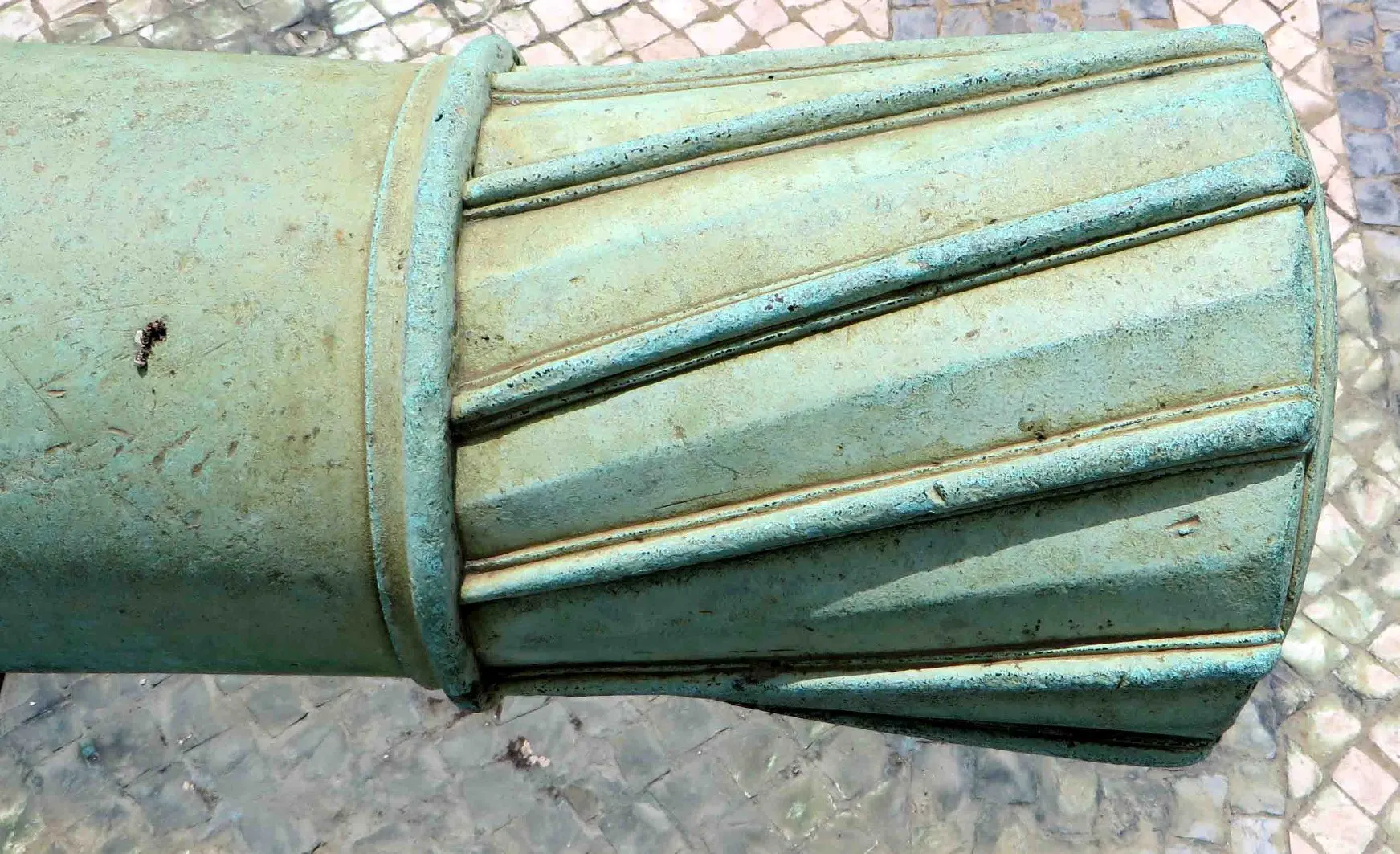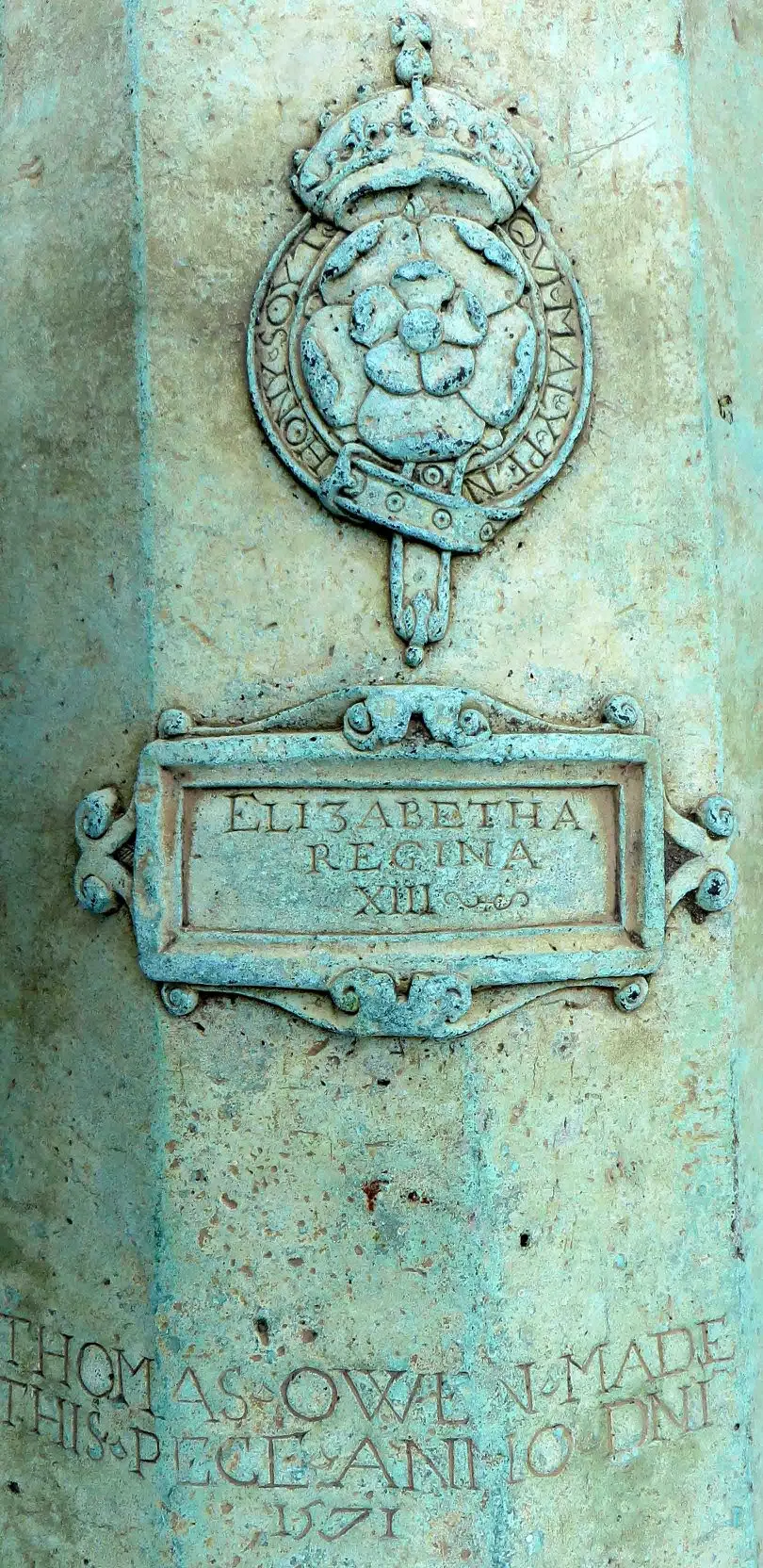Artillery in Portugal: Lisbon, Museu Militar de Lisboa (Portuguese Army Military Museum of Lisbon) 3
Artillery in Portugal (Part 3)Military Museum of Lisbon
The aim of this website is to locate, identify and document every historical piece of artillery preserved in Portugal. Many contributors have assisted in the hunt for these guns to provide and update the data found on these web pages. Photos are by the author unless otherwise credited. Any errors found here are by the author, and any additions, corrections or amendments to this list of Guns and Artillery in Portugal would be most welcome and may be e-mailed to the author at [email protected].
Artilharia em Portugal (Parte 3)
Museu Militar de Lisboa
O objetivo deste site é localizar, identificar e documentar cada peça histórica de artilharia preservada em Portugal. Muitos colaboradores ajudaram na busca por essas armas para fornecer e atualizar os dados encontrados nessas páginas da web. As fotos são do autor, salvo indicação em contrário. Qualquer erro encontrado aqui é do autor e quaisquer acréscimos, correções ou alterações a esta lista de armas e artilharia em Portugal serão bem-vindos e podem ser enviados por e-mail ao autor em [email protected].
Artillery and Military Museum Artifacts, Lisbon, Portugal
Museu Militar de Lisboa (Portuguese Army Military Museum of Lisbon)
Outdoor courtyard collection.





Portuguese Bronze Smoothbore Muzzleloading guns on iron stands, in the museum's inner courtyard.



Bronze Smoothbore Muzzleloading Gun, Great Britain, from the reign of King George II, who reigned over Great Britain from 11 June 1727 until his death in 1760.

Bronze guns and mortars on the North side of the courtyard.


Bronze guns and mortars on the East side of the courtyard.


(Pippohispano Photos)

(Author Photo)
Bronze 90-pounder Colossal Basilisk gun, 16th century siege gun known as a super-sized basilisk, cast in India and known as the "Tiro de Diu" (the shot of Diu). It has a calibre of 23.5-cm, is 6.11 metres in length, weighs 19,499 kg (42988 lbs), and throws 43 kg (95 lb) iron balls. It was fired in action in the First Siege of Diu, which occurred when an army of the Sultanate of Gujarat under Khadjar Safar, aided by forces of the Ottoman Empire attempted to capture the Portuguese held city of Diu in 1538. The Portuguese successfully resisted the four months long siege during the Ottoman-Portuguese War.
The inscription reads, "From our Lord, the Sultan of Sultans of all time; life-giver of the Tradition of the Prophet of Merciful (God); who fights for the exaltation of the precepts of the Koran; destroyer of the fundaments of partisans without mercy; which keeps away the houses of worshippers of idols; victor on the meeting day of the two armies; heir to the throne of Solomon; trusted in God the Benefactor; possessor of virtues; Bahadur xah, Sultan: this piece was made on the 5th of the month of Dhul Ka'da, in the year nine hundred and thirty nine". (This date corresponds to 29 May 1533).
This gun came from India and was placed in Lisbon Castle. In the reign of King D. João, it was placed in the Tower of S. Juliao da Barra, on a gun carriage invented by engineer Antonio Pereira. It was to be smelted for a statue of King D. Jose I, but when the inscription was translated by Father Jose de S. Antonio Moura, it was determined that the piece would be preserved.

A hand-made drawing of the Portuguese fortress of Diu, by Gaspar Correia, for his book "Lendas da Índia", written between 1558-1563 and first published in 1858.



Bronze guns on the south side of the courtyard.

Bronze gun on the South side of the Courtyard, Museu Militar de Lisboa (Portuguese Army Military Museum of Lisbon).
This is a huge bronze gun, an English piece of 13.5-cm calibre, 3.05 metres long, weighing 1,762 kg (3,885 lbs) and capable of throwing 7.8 kg (17 lb) iron balls. The gun is inscribed with Roses of the Houses of York and Lancaster, surmounted with the Royal Crown and surrounded with the motto "Jarreteira" (Garter), and "Honi soit qui mal y pense" (Evil to him who evil thinks), with the name of Queen Elizabeth I, Elizabeth Regina, XIII, and near the powder chamber, the name of the foundry, (THOMAS OWEN MADE THIS PECE ANI IO DNI 1571). There must be a really interesting story behind how this gun wound up in the museum.
Apparently, Thomas Owen had a gun foundry in Houndsditch, which he closed in 1571. John & Robert Owen are recorded as the founders of one of the guns from the Mary Rose which sank in 1545. John Owen is recorded in the list of founders on the main page between 1538 and 1553. John Owen was either the elder brother or father of Thomas Owen. John & Robert worked under the Frenchman Peter Baude of Calais. (Wikipedia)
Possibly captured during the naval battle of Terceira Island (26 July 1582) in which English ships also participated alongside the French fleet defeated by the Spanish. (Renato Gianni Ridella)
Most probably salvaged from the 1591 HMS Revenge, off Terceira. The 1582 battle was off Sao Miguel’s island. (Alexandre Monteiro)
The XIII, would refer to the 13th year of the reign of Elizabeth I (1571). She was actually crowned until 15th January 1559, but she would have been regarded as Queen on the death of her sister Mary in 1558. Maybe this piece was cast in honour of that event? (Duncan Mirylees)



(Ruth Rynas-Brown Photos)
English piece of 13.5-cm calibre, 3.05 metres long, weighing 1,762 kg (3,885 lbs) and capable of throwing 7.8 kg (17 lb) iron balls. The gun is inscribed with Roses of the Houses of York and Lancaster, surmounted with the Royal Crown and surrounded with the motto "Jarreteira" (Garter), and "Honi soit qui mal y pense" (Evil to him who evil thinks), with the name of Queen Elizabeth I, Elizabeth Regina, XIII, and near the powder chamber, the name of the foundry, (THOMAS OWEN MADE THIS PECE ANI IO DNI 1571).


The first Bronze Smoothbore Muzzleloading Gun in this row was cast in Enchausae, Holland, by the founder, Jan verbruggen in 1752. Used in sieges and fortress defence, this gun has a calibre of 14-cm, weights 2,020 kg and throws 8.2 kg (17 lb) iron balls. The gun is richly ornamented with the coat of arms of King Jose I on the barrel, and thistle leaves on the cascabel. It was part of the defences of the fortress of Mozambique.



Bronze guns and mortars on the West side of the courtyard.

Various heavy bronze mortars in the courtyard, with Portuguese coat of arms on the barrel.

Coat of arms of the United Kingdom of Portugal, Brazil and the Algarves.

Netherlands coat of arms, Lion over VIVILATE DEO CONFIDENTES, on a bronze gun in the museum outdoor courtyard.

Mermai coat of arms on a bronze gun within the museum's outdoor courtyard.

Bronze gun with Lion coat of arms over ZEELANDIA, within the museum's outdoor courtyard.

Bronze gun with French coat of arms, within the museum's outdoor courtyard.
Bronze gun with crown over MAR, within the museum's outdoor courtyard.

Bronze gun with coat of arms on the barrel, within the museum's outdoor courtyard.
Bronze gun with VIIII - XVIIII-X on the barrel, within the museum's outdoor courtyard.
Bronze gun with Portuguese coat of arms, scroll with SEBASTIANoS, above ELCAPITAIVA SCORIA AMEIRACO on the barrel, within the museum's outdoor courtyard.
Bronze gun with Portuguese coat of arms, above a scroll with THEODOSIVS V, BRAGANTIEDVX on the barrel, within the museum's outdoor courtyard.
Bronze gun with Portuguese coat of arms, above a scroll with THEODOSIVS V, BRAGANTIEDVX on the barrel, within the museum's outdoor courtyard.
Bronze gun with early coat of arms, above 62Q, 721 LAS on the barrel, within the museum's outdoor courtyard.

Bronze gun with early coat of arms, above a scroll with EL MAROVES DE LAHINOJOSACAPI TANGENERAL DE LA ARTILLERIA on the barrel, within the museum's outdoor courtyard.

Bronze gun with Portuguese coat of arms, above DOMIOA OIIIIREY, DEPORTVGAL, above SENDOTINEN TE G RVI COREA LICAS, MATIAS ES CARTIIM MEFES LA, 1650, on the barrel, within the museum's outdoor courtyard.

Bronze gun with Portuguese coat of arms, DOMAFONSO V, REY DE PORTVGAL, over SERVINDODETE NENTEG MEL DEAN DRADE METIAS ES CARTIM MEFES LXA 1661 on the barrel, within the museum's outdoor courtyard.
Bronze gun with Portuguese coat of arms, IOANES V on the barrel, within the museum's outdoor courtyard.

Bronze gun with Portuguese coat of arms, IOANES V, above the touchhole, with an inscription and 10808 below the touchhole on the barrel, within the museum's outdoor courtyard.

Bronze gun with English coat of arms, HONI SOIT QUI MAL Y PENSE, DIEU ET MON DROIT on the barrel, within the museum's main courtyard.
Bronze gun with crown over CR I monogram, within the museum's outdoor courtyard.
Bronze gun with crown over CR I monogram, within the museum's outdoor courtyard.
Bronze Smoothbore Muzzleloading Gun and Mortar collection of shields, crests, monograms and Royal cyphers in the inner courtyard.
Bronze Smoothbore Muzzleloading Gun with the Royal monogram/cypher of King Luis I, on the barrel, within the museum's outdoor courtyard.

Bronze Smoothbore Muzzleloading Gun with the Royal monogram/cypher of King Luis I, 1881, on the barrel, within the museum's outdoor courtyard.

Bronze Smoothbore Muzzleloading Gun with the Royal monogram/cypher of King Luis I, 1871, on the barrel, within the museum's outdoor courtyard.

15-cm bronze siege Mortar M/96 with Canet breech, cast in Portugal in 1905. This was the last type bore length of bronze siege mortar made in Portugal. This mortar has a 15-cm calibre, is 123-cm long and has a bore length of 106-cm.

15-cm bronze siege Mortar M/96 with Canet breech, cast in Portugal in 1905. This was the last type bore length of bronze siege mortar made in Portugal. This mortar has a 15-cm calibre, is 123-cm long and has a bore length of 106-cm. This one is on display in the interior gun room.





